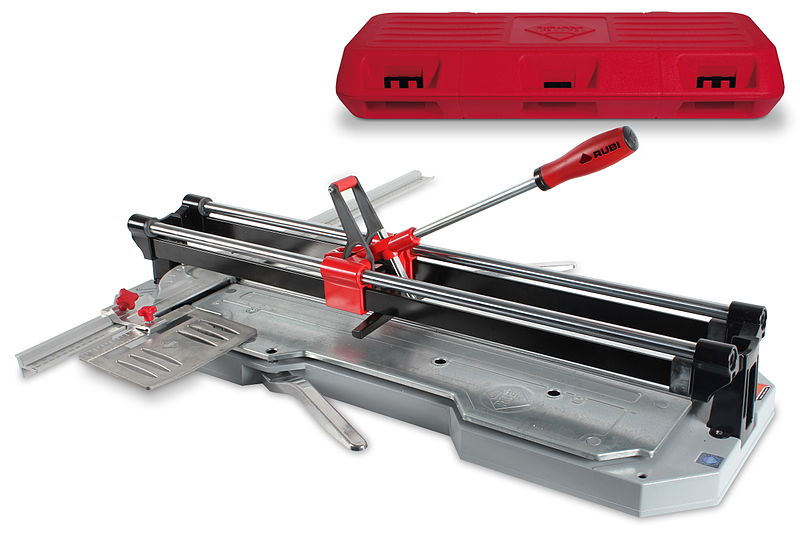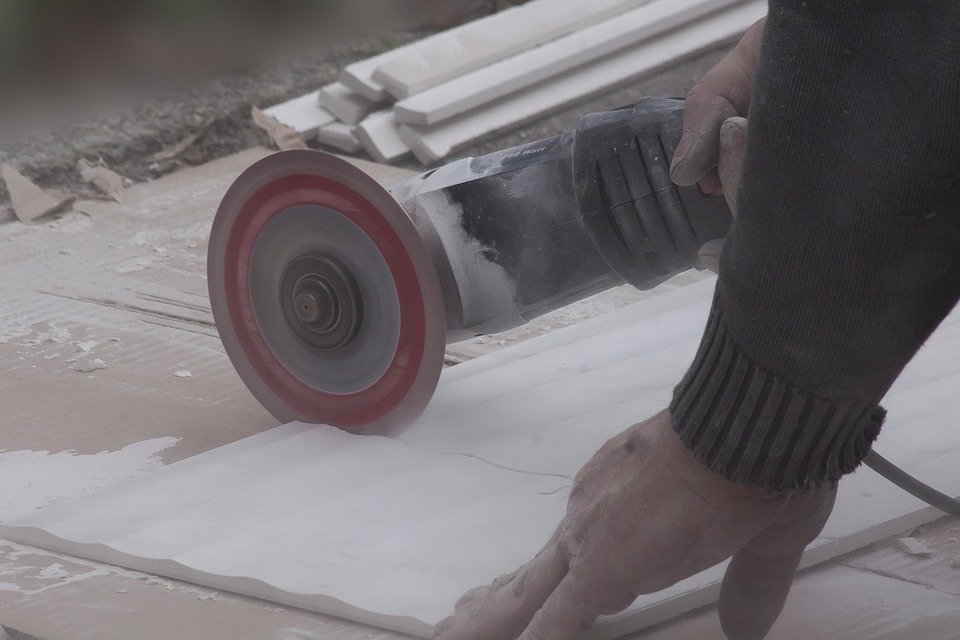Tile cutting is arguably one of the most difficult aspects of tiling in its entirety. This is so because the cut tiles must be dimensionally symmetrical to either the wall or the floor formats mapped out. As such, much emphasis is placed on the accuracy and precision of the person cutting the tiles. We will teach you how to cut porcelain tiles.
Among the variety of tiles that are cut, porcelain tiles are the most difficult to cut owing to their hardness, thus in most cases a diamond blade wet saw is essential to the practice. However, there is a disclaimer to using a wet saw as the blade may chip the surface of porcelain tile thus giving the tile small cuts, which look unnatural.
As a means to curb this problem, tile installers use a wet saw with an adjustable blade that guarantees a cleaner, smoother cut. More so, employing the use of a standard depth saw will reduce the occurrence of a chipped tile significantly. There is not, however, a full proof way of avoiding chippings but tile installers recommend working slowly as well as using a new blade to reduce the risk.
As earlier aforementioned in the paragraph one above, porcelain is the hardest to cut of the tiles. This is attributed to the vitreous firing of porcelain tiles suggesting that the mass tile melts into an invariable glass-resembling mass, making it extremely difficult to cut with just a primitive tile cutter.
Despite the fact that they are tough, porcelain tiles are brittle and thus may break during the cutting procedure. Several tools can be employed to the cutting of porcelain tiles, and the following discussion revolves around the cutting of porcelain tiles and the tools used with emphasis on a wet tile saw, tile saw and a manual tile cutter.
Cutting Porcelain Tile with a Manual Tile Cutter
When using a manual tile cutter, its crucial that steps are made to ensure consistency. You should first measure the tile and then the line to be cut is marked usually using a suitable wax pencil. To ensure the consistency of grout lines, it is advisable to allow for spacing of the porcelain tile. Masking tape can be applied along the edge of the tile, and this significantly reduces the risk of tile chipping.
A clean cut can be made using a traditional cutting point; the tile is lined up staying level with the cutting edge. The point is slid along the tile making sure to stay online. With firm continuous pressure; the tile is bent downwards until it snaps.
If the texture of the tile is not as deep, the best technique to cut the tile is to carry out incisions to make deep, complete cuts repeatedly. If the texture is deep, it is recommended to carry out the incisions on the back of the tile where the tile is facedown. The rough edges can be smoothened up meticulously with an abrasive block to retain original, initial edges.

Cutting Porcelain Tile with a Wet Tile Saw
A tile saw is a piece of machinery or equipment with similar working principles as an electric miter saw but with distinct features such as a diamond blade and a water cooling system. The water aspect of a wet tile saw prevent the tile cracking under immense heat friction.
There exist two types of wet cutting for porcelain tiles. One type has an overhanging blade, which moves over the porcelain tile surface and the are those that resemble a saw bench wherefore the tile being cut is passed across an immobile blade.
The saw bench method is the most commonly used for domestic tiling. In this procedure, the installer begins by aligning a guide mark with the cutting wheel and then proceeding to follow the guide mark. The tile is then slowly projected towards the rotating cutting blade and fed across the blade until it is cut completely.
Some wet saws lack a depth set feature, and as such, one can make a shallow cut across the tile surface with a diamond blade attached on a rotating hand wielded tool, but this requires someone with a steady hand. Use of masking tape across the cutting line on top of the tile can significantly reduce chipping. It is always advisable to use eye protection when cutting porcelain tiles using the wet saw method to avoid dust and chip offs from getting into the eyes.
Cutting Using an Angle Grinder
An angle grinder is a suitable tool for curving of porcelain tiles as well as other tiles. It is useful in cutting porcelain tiles around openings for passage of pipes or waste for that matter, hence need for a curved cut rather a hole.
The cut to be curved out is marked out with emphasis to which side is waste. Electrician’s tape is a useful marker. One has to make sure to mark the curve to be made both join the anterior and posterior sides of the porcelain tile.
With the tile surface upwards and with minimal pressure, one meticulously follows the curve with the edge of the grinder. This aims at achieving a smooth curve that is devoid of chips. The tile is then slid over on the opposite side, and small cuts are then made to this side.
These aid in maintaining control and prevention of jamming. The blade runs only on the waste side of the tile surface. After the curve is cut out, the edge can be smoothened using a mordant caustic block. The finishing level depends on the visibility of the cut as well as if one is using lustrous tiles.
Conclusion
In conclusion, the smoothness of the edges and the vertices of the porcelain tiles is depended on the tool used and the carefulness the cutter is using. The implication being that the one is cutting out to be calculative during the cutting process by applying the correct lubricants.
The efficiency of the tools is also a great determining factor and there sharpening, and maintenance of the saws and the other cutting tools should be top notch. All the angles that are required to be cut require a cutting tool that will not lose the line of cut.
At the same time, the lines of symmetry should be followed by carefully guiding the cutting tool such as the tiles saws. The efficiency during cutting determines the quality of the end product, that is, the tiles.

